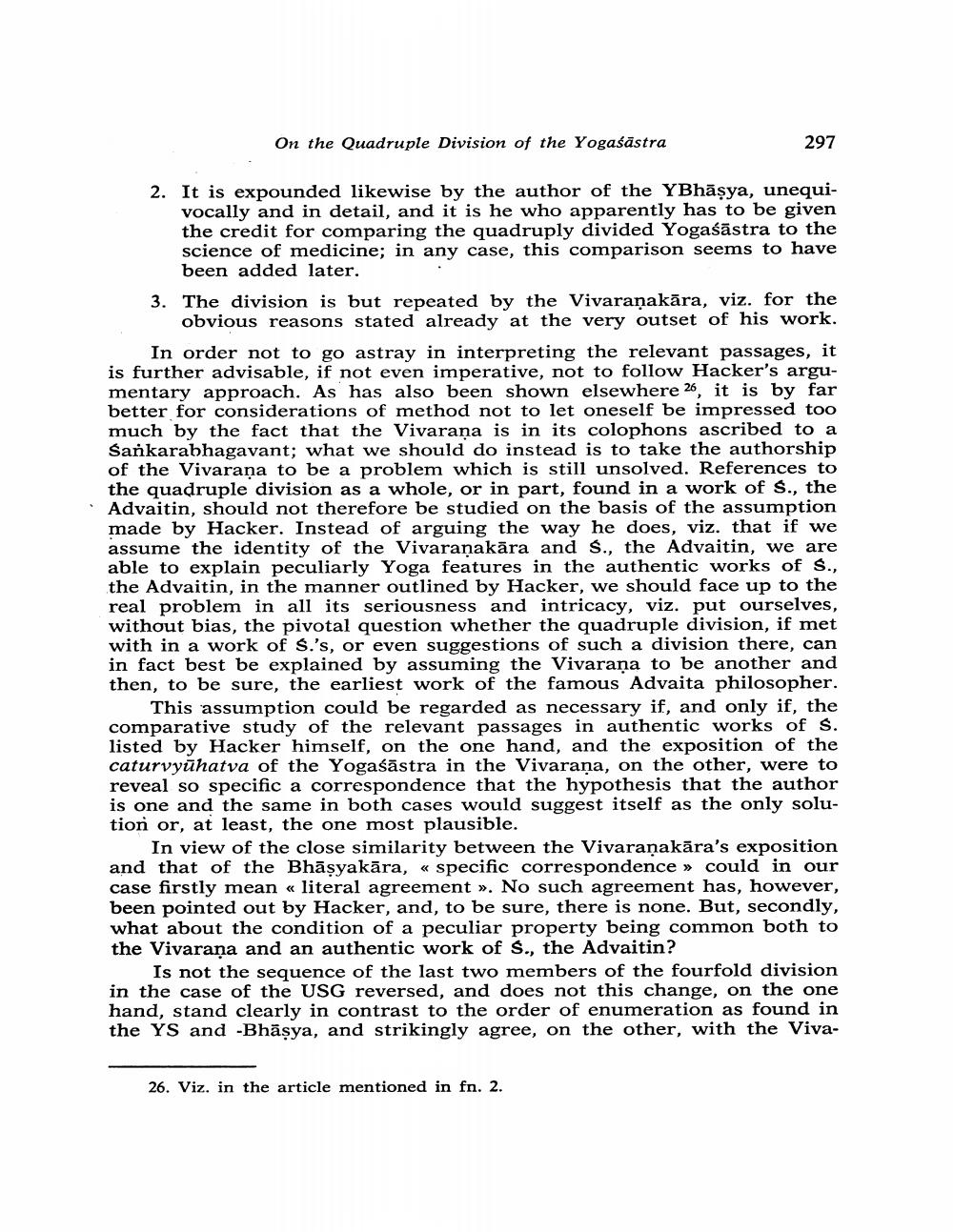Book Title: On Quadruple Division Of Yogasastra Author(s): A Wezler Publisher: A Wezler View full book textPage 9
________________ On the Quadruple Division of the Yogaśāstra 297 2. It is expounded likewise by the author of the YBhāşya, unequi vocally and in detail, and it is he who apparently has to be given the credit for comparing the quadruply divided Yogaśāstra to the science of medicine; in any case, this comparison seems to have been added later. 3. The division is but repeated by the Vivaranakāra, viz. for the obvious reasons stated already at the very outset of his work. In order not to go astray in interpreting the relevant passages, it is further advisable, if not even imperative, not to follow Hacker's argumentary approach. As has also been shown elsewhere 26, it is by far better for considerations of method not to let oneself be impressed too much by the fact that the Vivarana is in its colophons ascribed to a Sankarabhagavant; what we should do instead is to take the authorship of the Vivarana to be a problem which is still unsolved. References to the quadruple division as a whole, or in part, found in a work of S., the Advaitin, should not therefore be studied on the basis of the assumption made by Hacker. Instead of arguing the way he does, viz. that if we assume the identity of the Vivaranakära and S., the Advaitin, we are able to explain peculiarly Yoga features in the authentic works of S., the Advaitin, in the manner outlined by Hacker, we should face up to the real problem in all its seriousness and intricacy, viz. put ourselves, without bias, the pivotal question whether the quadruple division, if met with in a work of $.'s, or even suggestions of such a division there, can in fact best be explained by assuming the Vivarana to be another and then, to be sure, the earliest work of the famous Advaita philosopher. This assumption could be regarded as necessary if, and only if, the comparative study of the relevant passages in authentic works of $. listed by Hacker himself, on the one hand, and the exposition of the caturvyūhatva of the Yogaśāstra in the Vivarana, on the other, were to reveal so specific a correspondence that the hypothesis that the author is one and the same in both cases would suggest itself as the only solution or, at least, the one most plausible. In view of the close similarity between the Vivaranakāra's exposition and that of the Bhāṣyakāra, « specific correspondence » could in our case firstly mean « literal agreement ». No such agreement has, however, been pointed out by Hacker, and, to be sure, there is none. But, secondly, what about the condition of a peculiar property being common both to the Vivarana and an authentic work of S., the Advaitin? Is not the sequence of the last two members of the fourfold division in the case of the USG reversed, and does not this change, on the one hand, stand clearly in contrast to the order of enumeration as found in the YS and -Bhāsya, and strikingly agree, on the other, with the Viva 26. Viz, in the article mentioned in fn. 2.Page Navigation
1 ... 7 8 9 10 11 12 13 14 15 16 17 18 19 20 21 22 23 24 25 26 27 28 29 30 31 32 33 34 35 36 37 38 39 40 41 42 43 44 45 46 47 48 49
